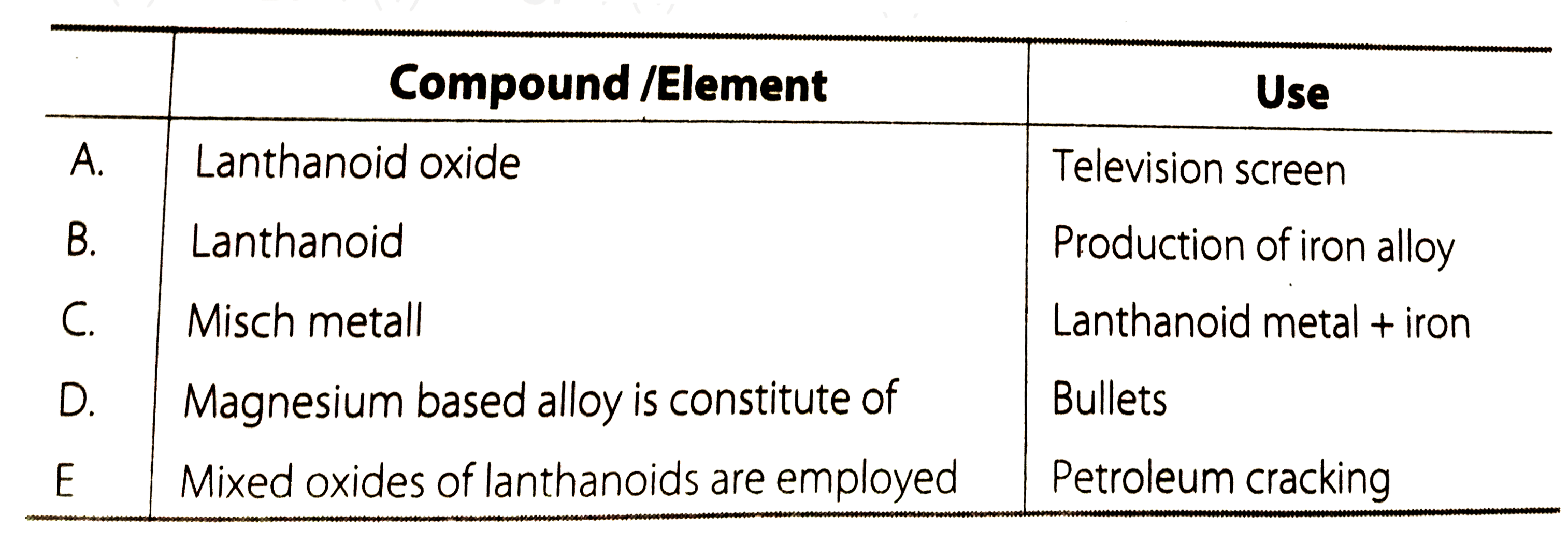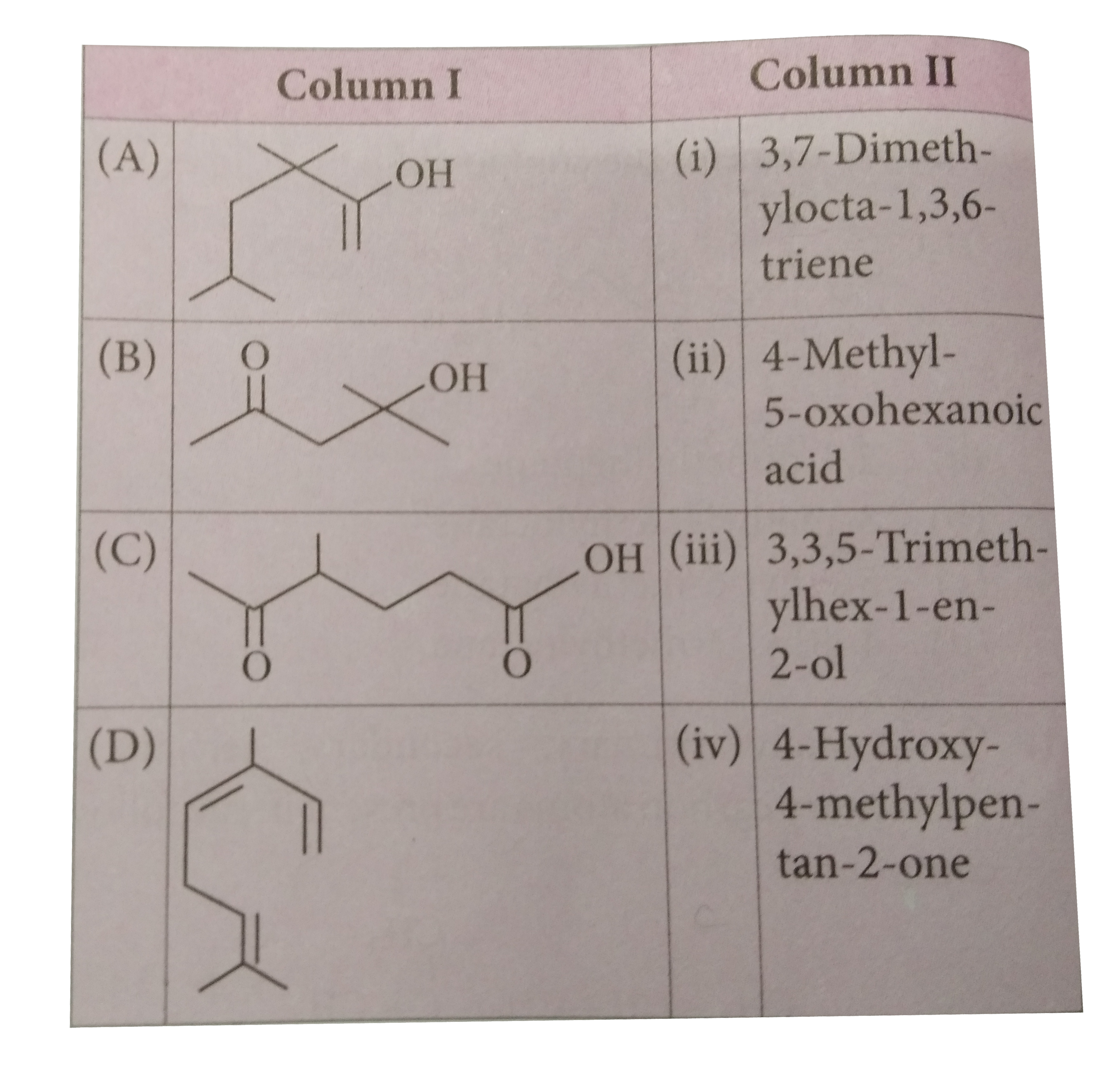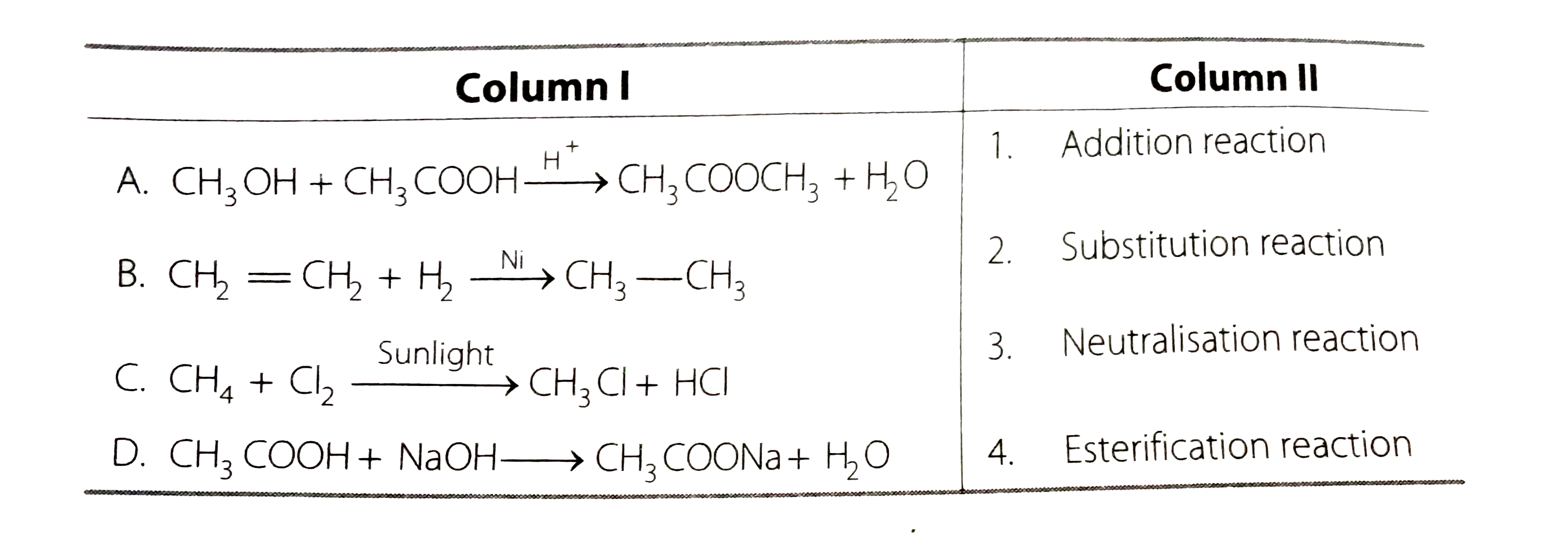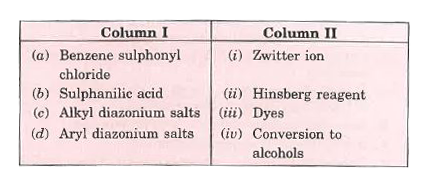Match the compounds given in Column I with the effects given in Column II.

(a)-(iii), (b)-(iv), (c)-(i), (d)-(ii)
Topper's Solved these Questions
- BOOK - MODERN PUBLICATIONCHAPTER - HALOALKANES AND HALOARENESEXERCISE - NCERT examplar Problems (Assertion and Reason Type Questions)10videos
HALOALKANES AND HALOARENES
- BOOK - MODERN PUBLICATIONCHAPTER - HALOALKANES AND HALOARENESEXERCISE - MEMORY TEST (A. Say True or False)14videos
HALOALKANES AND HALOARENES
- BOOK - MODERN PUBLICATIONCHAPTER - HALOALKANES AND HALOARENESEXERCISE - NCERT examplar Problems (Short Answer Type Questions)21videos
HALOALKANES AND HALOARENES
- BOOK - MODERN PUBLICATIONCHAPTER - GENERAL PRINCIPLES AND PROCESSES OF ISOLATION OF ELEMENTSEXERCISE - COMPETION FILE (Integer Type Numerical Value Type Questions)5videos
GENERAL PRINCIPLES AND PROCESSES OF ISOLATION OF ELEMENTS
- BOOK - MODERN PUBLICATIONCHAPTER - ORGANIC COMPOUNDS CONTAINING NITROGEN EXERCISE - UNIT PRACTICE TEST5videos
ORGANIC COMPOUNDS CONTAINING NITROGEN
Similar Questions
Knowledge Check
- Question 1 - Select One
Match the compounds/elements given in Column I with uses given in Column II.
 A→(2)B→(1)C→(4)D→(5)
A→(2)B→(1)C→(4)D→(5)
Match the pollutants given in Column I with their effects given in Column II.
 View Solution
View SolutionMatch the pollutants given in Column I with their effects given in Column II.
 View Solution
View SolutionMatch the compounds given in Column I with their uses mentioned in Column II.
 . View Solution
. View SolutionMatch the compounds given in column I with the IUPAC names given in column II and mark the appropriate choice.
 View Solution
View SolutionMatch the reactions given in Column I with the names given in Column II.
 View Solution
View SolutionMatch the reactions given in Column I with the statements given in Column II
 View Solution
View SolutionMatch the reactions given in Column I with the statements given in Column II
 View Solution
View Solution



